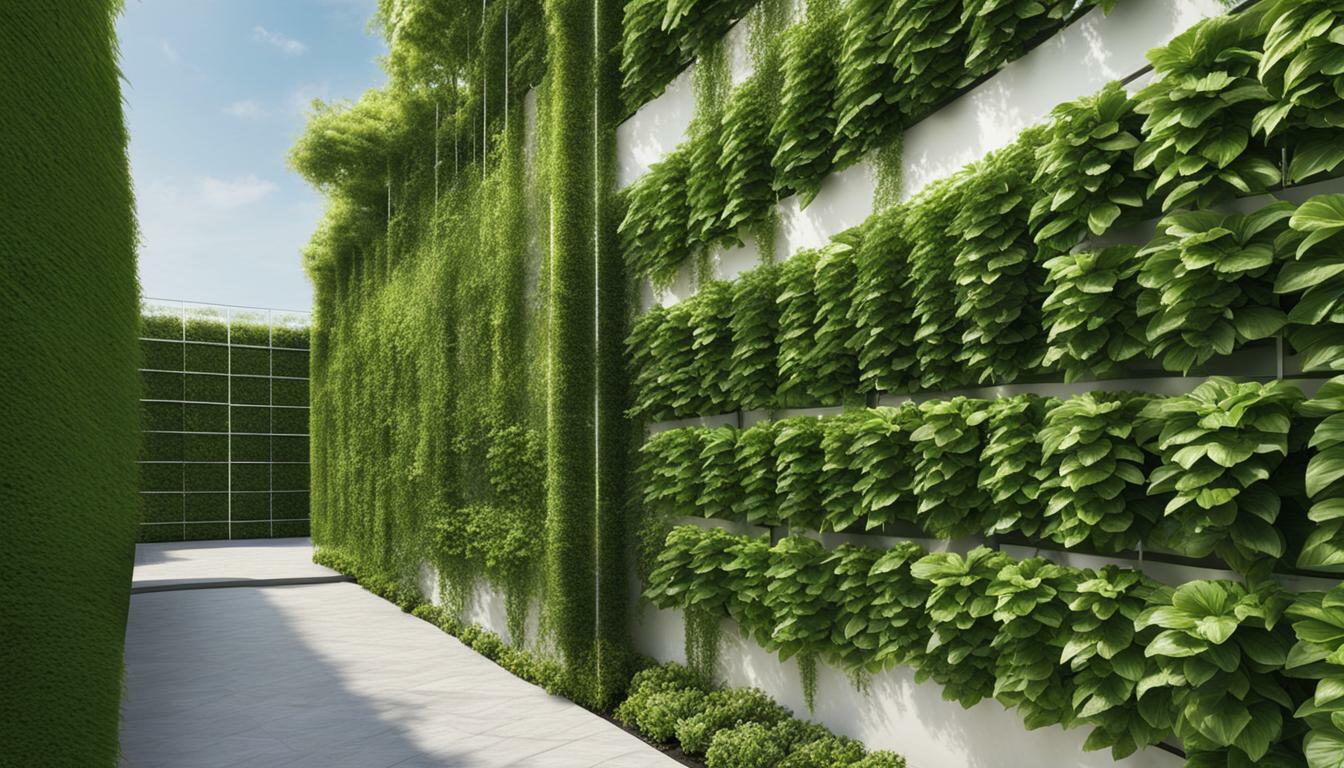Revolutionize your gardening experience with an
outdoor vertical hydroponic garden and discover the many advantages it offers. In a world where resources are becoming scarce and the effects of pollution and climate change are felt, traditional gardening methods are no longer sustainable. That’s where outdoor vertical hydroponic gardening comes in.Outdoor vertical hydroponic gardening is a cutting-edge technique that allows you to grow plants without the use of soil. Instead, plants are grown in a nutrient-rich water solution, providing them with the essential minerals they need to thrive. This innovative system is not only efficient but also environmentally friendly, making it the perfect solution for eco-conscious gardeners.
Key Takeaways:
- Outdoor vertical hydroponic gardening revolutionizes the way we grow plants by eliminating the need for soil.
- Plants in a vertical hydroponic system are grown in a nutrient-rich water solution, resulting in faster growth and higher yields.
- Vertical hydroponic gardens are space-saving and can be set up in various outdoor areas like patios, rooftops, and balconies.
- These gardens are extremely water-efficient, making them an eco-friendly option for gardeners looking to conserve water.
- Vertical hydroponic gardening also minimizes the risk of soil-borne diseases and pests, resulting in healthier plants.
With an
outdoor vertical hydroponic garden, you can enjoy year-round plant production, both outdoors and indoors. The controlled
nutrient delivery system ensures that plants receive the perfect amount of nutrients, resulting in higher yields and enhanced crop flavor. Additionally, this method of gardening conserves water, making it a sustainable option for
eco-friendly gardening.If you’re interested in setting up your own
outdoor vertical hydroponic garden, there are several DIY options available, such as stacked hydroponic set-ups, A-frame systems, zig-zag designs, rain towers, and vertical gutter gardens. These set-ups are customizable and can be adapted to fit your available space and gardening needs.To maintain your vertical hydroponic garden, regular monitoring of
pH and nutrient levels is essential. Pruning and harvesting should also be done regularly to promote healthy growth. By following these maintenance guidelines, you can ensure that your garden thrives and continues to provide you with a bountiful harvest.In conclusion, revolutionize your gardening experience with an outdoor vertical hydroponic garden. This innovative method offers numerous benefits, including higher yields,
water conservation,
space-saving design, and the ability to grow plants without the risk of soil-borne diseases. By embracing outdoor vertical hydroponic gardening, you can enjoy a sustainable and eco-friendly approach to cultivating your own fresh produce.
What is Vertical Hydroponics?
Vertical hydroponics is a cutting-edge farming technique that involves growing plants without soil in a vertical setup, offering numerous advantages over traditional cultivation methods. This innovative system utilizes a tower or vertical structure to maximize space utilization and cultivate a variety of plants in urban environments, making it ideal for those with limited gardening space.In
vertical hydroponics, plants receive essential nutrients through a water-based solution instead of soil. The vertical arrangement allows
gravity to play a major role in water and
nutrient delivery, as the water flows from the top of the system to the bottom, where it settles and provides nutrients to the plants. With this method, up to 90% of water can be efficiently utilized, making it an eco-friendly option.There are various types of vertical hydroponic systems. One common approach involves a vertical tower with a tube connected to a small water reservoir at the bottom. A hydroponic pump is used to pump the water to the top of the system, and then
gravity brings the water down in a controlled manner, delivering the nutrients to the plants. Another option is the zig-zag
vertical hydroponic system, where pipes arranged in a zig-zag manner hold the net cups with plants, allowing water to flow through the roots.
| Advantages of Vertical Hydroponics |
|---|
| Year-round plant production |
| Planting can be done both outdoors and indoors |
| Nutrients supplied to plants can be controlled |
| Water conservation |
| Higher yield per area |
| Enhanced flavor of the crop |
| Increased crop yield |
| Diseases and pests that are soil-borne can be avoided |
| No necessity for weeding |
| Lesser chances of re-potting plants since they aren’t bound by roots |
| Can be set up in sunny areas like the patio, rooftop, or balconies |
| Makes up to 90% efficient use of water |
With such benefits,
vertical hydroponics offers a compelling alternative to traditional soil-based cultivation. Whether you have limited space or want to maximize your garden’s productivity, this method provides an efficient and sustainable way to grow plants.
“Vertical hydroponics is a cutting-edge farming technique that involves growing plants without soil in a vertical setup, offering numerous advantages over traditional cultivation methods.”
DIY Vertical Hydroponic Set-ups
If you’re interested in implementing vertical hydroponics in your garden, there are various do-it-yourself (DIY) set-ups you can explore. One option is a
stacked hydroponic set-up, where plants are stacked one upon another in a vertical tower. This basic set-up can be easily assembled and managed, making it suitable for beginners. However, attention should be paid to regulating water flow and ensuring proper light supplementation and nutrient mix.An A-frame hydroponic system is another DIY option. It allows for the growth of a large number of plants in a limited space, making it ideal for maximizing production. While the pumping system might be more complex, it is still manageable with proper instructions.A zig-zag hydroponic system is a space-efficient vertical set-up that can be built using PVC pipes. It can efficiently support the growth of multiple plants and offers higher production potential. Light distribution can be easily achieved by arranging multiple light panels on top of each pipe.For those who want to make use of rainwater, a
rain tower hydroponic set-up can be an excellent choice. This tall tube hydroponic system is highly efficient, ensuring optimal water usage. The water flow can be easily regulated, making it a straightforward set-up for DIY enthusiasts.Lastly, a vertical gutter garden is an innovative way to utilize gutters for vertical hydroponics. By building this type of system, you can take advantage of rainwater and create a beautiful garden in the right spot.

These DIY vertical hydroponic set-ups provide an opportunity for individuals to create their own unique gardens, allowing them to enjoy the benefits of vertical hydroponics in a cost-effective and customizable way.
How Does Vertical Hydroponics Work?
Vertical hydroponics utilizes a specialized system where water and nutrients are delivered to the plants from top to bottom, allowing for efficient nutrient absorption and growth. This system is designed to maximize space utilization and optimize plant health.In a
vertical hydroponic system, a tower or structure is used to house the plants. The water, along with a nutrient solution, is pumped to the top of the system and then flows down through the plants in a controlled manner.
Gravity plays a crucial role in this process, as it helps the water to move downwards, delivering the necessary nutrients to the roots. The water and nutrients are absorbed by the plants’ roots through the use of net cups, which hold the plants in place at a 45-degree angle.There are various types of vertical hydroponic systems, such as a tower system or a zig-zag system. In a tower system, a tube is connected to a small water reservoir at the bottom. A hydroponic pump assists in pumping the water to the top of the tower, where it then flows down, delivering nutrients to the plants along the way. On the other hand, a zig-zag system consists of pipes arranged in a zig-zag pattern. The plants are placed in net cups at a 90-degree angle, and the water flows through the pipes, providing nutrients to the plants.Overall, vertical hydroponics offers a highly efficient and
space-saving method of gardening. By leveraging gravity and carefully controlled
nutrient delivery, this system allows for optimal plant growth and yield.

Table 1: Comparison of Different Types of Vertical Hydroponic Systems
| Type of System | Description |
|---|
| Vertical Tower System | A tower structure with a tube connected to a water reservoir at the bottom. Water is pumped to the top, and gravity helps distribute the nutrients to the plants. |
| Zig-zag System | Pipes arranged in a zig-zag pattern with net cups holding the plants. Water is pumped to the top and flows down through the pipes, delivering nutrients to the plants. |
Table 1 provides a comparison of the different types of vertical hydroponic systems commonly used in gardening. Each system has its own unique design and advantages, allowing gardeners to choose the one that best suits their needs and space constraints.
Advantages of Vertical Hydroponics
Vertical hydroponics offers a range of advantages, including year-round plant production, higher yields per area, and efficient water use, making it a sustainable and productive gardening method.With vertical hydroponics, plants can be grown indoors or outdoors throughout the year, regardless of the season. This means a constant supply of fresh produce right at your fingertips, even in colder climates or urban areas with limited space.One of the key
advantages of vertical hydroponics is its ability to maximize yields per square foot. By utilizing vertical space, you can grow more plants in a smaller area compared to traditional soil-based gardening. This efficiency is especially beneficial for urban gardening, where space is often limited.
Water conservation is another significant advantage of vertical hydroponics. This system uses up to 90% less water than traditional soil-based gardening, as the water is recirculated and reused in a closed-loop system. Not only does this save water, but it also reduces the risk of nutrient runoff and pollution. By providing the precise amount of water and nutrients directly to the plants’ roots, vertical hydroponics promotes healthier growth and minimizes waste.
Benefits of Vertical Hydroponics:
- Year-round plant production
- Higher yields per area
- Efficient water use
- Space-saving
- Minimizes pest and disease risks
- Reduces the need for weeding
- No soil-borne diseases
- Faster growth and increased crop yield
- Can be set up in various locations, including balconies and rooftops
Vertical Hydroponics vs. Traditional Gardening:
| Vertical Hydroponics | Traditional Gardening |
|---|
| Maximizes space utilization | Requires larger land area |
| Uses up to 90% less water | Higher water consumption |
| Minimizes pest and disease risks | Greater susceptibility to pests and diseases |
| Allows for year-round plant production | Seasonal limitations |
| Promotes faster growth and higher yields | Variable growth rates and yields |
Overall, vertical hydroponics provides a sustainable and efficient solution for gardeners looking to revolutionize their gardening experience. With its numerous advantages, this method holds great potential for maximizing plant production, conserving water, and achieving higher yields.

DIY Vertical Hydroponic Set-ups
Get creative with DIY vertical hydroponic set-ups, such as stacked systems, A-frame structures, zig-zag designs, rain towers, and vertical gutter gardens, to create your own unique garden.One of the most basic DIY vertical hydroponic set-ups is the stacked system. This set-up involves stacking plants one upon the other, allowing you to maximize space and increase your yield. You can easily purchase a kit from a gardening store with step-by-step instructions on how to assemble it. With proper regulation of water flow, adequate light supplementation, and a well-balanced nutrient mix, you can successfully manage a backyard vertical hydroponic system.Another popular DIY vertical hydroponic set-up is the A-frame structure. This set-up allows for the growth of a large number of plants in a limited space. While the tubing and pumping system may be slightly more complex than a stacked system, with the right instructions, you can easily build and operate it. The A-frame design provides excellent support for plants and allows for efficient water and nutrient delivery.A zig-zag hydroponic system is another type of vertical set-up that is space-efficient and promotes higher production. With a few PVC pipes and the proper instructions, you can build this system yourself. While the water pumping may be slightly more complicated, once you figure it out, you’ll be able to efficiently grow many plants.If you’re looking for an efficient and water-saving vertical hydroponic set-up, consider a rain tower. This tall tube hydroponic set-up uses gravity to efficiently deliver water to the plants. The water flow can easily be regulated, and these systems are relatively simple to set up on your own.Add a touch of creativity to your garden with a vertical gutter garden. By using gutters as your planting medium, you can easily assemble a vertical hydroponic system. Rainwater can be used to water the plants, making this system eco-friendly and cost-effective. It’s a simple and beautiful way to grow plants in a small space.
Benefits of DIY Vertical Hydroponic Set-ups
- Maximize space utilization
- Efficient water use
- Increase yield per area
- Controlled supply of nutrients
- Avoid soil-borne diseases and pests
- No weeding required
- Less re-potting of plants
- Suitable for sunny areas like patios, rooftops, and balconies
DIY Vertical Hydroponic Set-ups: Tips for Success
- Choose plants with shallow root systems
- Provide adequate lighting or use grow lights
- Regularly monitor and adjust pH and nutrient levels
- Maintain proper air circulation
- Keep the system clean to prevent algae growth

In conclusion, DIY vertical hydroponic set-ups offer a creative and efficient way to maximize your garden space. Whether you choose a stacked system, A-frame structure, zig-zag design, rain tower, or vertical gutter garden, you can enjoy the benefits of controlled nutrient delivery, higher yields, water conservation, and disease prevention. With the right materials and instructions, you can easily build and maintain your own DIY vertical hydroponic garden.
Advantages of Using a Vertical Hydroponic Garden
Embrace the benefits of a vertical hydroponic garden, such as
water efficiency, space-saving, and faster growth, compared to traditional soil-based gardening methods. Vertical hydroponic gardens revolutionize the way we cultivate plants by utilizing a soilless system that delivers essential nutrients through a water-based solution. This method not only saves water but also maximizes space utilization, making it an ideal choice for urban dwellers with limited gardening areas.In a vertical hydroponic garden, plants are grown vertically on a structure like a wall or tower. This design allows for efficient use of space, as more plants can be cultivated in a smaller area. The water used in hydroponic systems is recirculated and reused, resulting in up to 90% less water consumption compared to traditional soil-based gardens. This
water efficiency, coupled with precise nutrient control, promotes faster plant growth and higher yields.One of the significant advantages of a vertical hydroponic garden is the prevention of soil-borne diseases and pests. Without soil, the risk of these issues is significantly reduced, contributing to healthier plants. Additionally, the vertical design can help deter pests, making it easier to maintain a disease-free garden. Vertical hydroponic gardens also eliminate the need for weeding and re-potting, saving time and effort in the maintenance process.To give you a better idea of the advantages of a vertical hydroponic garden, here is a table summarizing the key benefits:
| Advantages of Vertical Hydroponic Garden |
|---|
| Water efficiency |
| Space-saving |
| Faster growth |
| Higher yields |
| Disease prevention |
| No weeding required |
| No re-potting necessary |
| Suitable for various locations (patio, rooftop, balconies) |
With these advantages in mind, it’s worth considering setting up a vertical hydroponic garden to enjoy the benefits of efficient water usage, space optimization, and increased crop yields. Whether you choose to build a DIY vertical hydroponic system or invest in a ready-made vertical gardening kit, you can enjoy the rewards of
eco-friendly gardening while maximizing your plant production.

Growing a Vertical Garden
Discover the best plants for a thriving vertical garden and learn about strategic
plant placement to optimize growth and visual appeal.When it comes to a vertical garden, the right plant selection and strategic placement are key to achieving a successful and visually appealing result. Here are some plants that work well in a vertical garden:
- Gerber daisies: These flowers with non-woody stems add vibrant color and visual interest as they spill over and dangle.
- Climbing roses: If you’re looking to cover a trellis, climbing roses can create a stunning display of color and fragrance.
- Cucumbers and squash: Growing these vining vegetables vertically can improve their quality and increase resistance to pests and diseases.
- Leafy greens and herbs: Plants like lettuce, spinach, basil, and mint are well-suited for vertical gardens and can be harvested for fresh and flavorful additions to your meals.
- Perennial fruits: Grapes, blackberries, raspberries, and melons are examples of fruits that thrive in vertical systems, providing a tasty and bountiful harvest.
When it comes to
plant placement in a vertical garden, consider the following tips:
- Place taller plants or structures on the north or west side of your garden to prevent shading out shorter plants.
- Ensure that larger or vining plants are placed towards the bottom of the vertical structure to avoid shading the lower plants.
- Provide adequate space between plants to allow for proper airflow and prevent overcrowding.
By carefully selecting the right plants and strategically placing them in your vertical garden, you can create a thriving and visually stunning display.
Table: Recommended Plants for Vertical Gardens
| Plant | Plant Type | Placement |
|---|
| Gerber daisies | Flower | Spill over and dangle |
| Climbing roses | Flower | Cover trellis |
| Cucumbers | Vegetable | Grow vertically for straighter growth |
| Leafy greens and herbs | Vegetable/Herb | Plant towards the top for easy harvesting |
| Perennial fruits | Fruit | Provide support for vertical growth |
With the right plants and strategic placement, your vertical garden can thrive and become a beautiful addition to your space.

Maintaining a Vertical Hydroponic Garden
Ensure the success of your vertical hydroponic garden with proper maintenance, which involves monitoring
pH and nutrient levels, regular pruning, and timely harvesting. By taking these steps, you can maximize the growth and yield of your plants while minimizing the risk of pests and diseases.Monitoring the pH and nutrient levels of your hydroponic system is crucial for the health and productivity of your plants. The pH level affects nutrient absorption, and it’s important to maintain a balanced pH range specific to the plants you are growing. Use a pH testing kit or meter to regularly check the pH of your nutrient solution and make adjustments as needed. Different plants have different nutrient requirements, so be sure to follow appropriate guidelines for your specific crops.Regular pruning is essential to maintain the structure and health of your vertical garden. Remove any dead or diseased plant material to prevent the spread of pests and diseases. Trim excess foliage to promote air circulation and prevent overcrowding. Additionally, pruning can encourage branching and stimulate new growth, resulting in a more robust and productive garden.Timely harvesting is key to enjoying the fruits of your labor. Harvesting at the right time ensures optimal flavor and nutrient content in your crops. Follow the recommended harvesting guidelines for each plant variety to achieve the best results. Harvesting also helps prevent plants from becoming overcrowded and encourages continuous growth.By maintaining proper pH and nutrient levels, regularly pruning your plants, and harvesting at the right time, you can ensure the success of your vertical hydroponic garden. With proper care and attention, your garden will thrive and provide you with a bountiful harvest.
Table 1: Recommended pH Levels for Common Hydroponic Plants
| Plant | Optimal pH Range |
|---|
| Lettuce | 5.5-6.5 |
| Tomatoes | 5.8-6.5 |
| Basil | 5.5-6.5 |
“Monitoring the pH and nutrient levels of your hydroponic system is crucial for the health and productivity of your plants.”
- Regularly test the pH of your nutrient solution using a pH testing kit or meter.
- Make adjustments to the pH level as necessary to maintain the optimal range for your plants.
- Monitor the nutrient levels in your solution and follow recommended guidelines for each plant variety.
- Prune your plants regularly to remove dead or diseased material and promote airflow.
- Trim excess foliage to prevent overcrowding and stimulate new growth.
- Harvest your crops at the appropriate time to enjoy the best flavor and nutrient content.
Remember to always follow proper maintenance practices for your specific hydroponic system and the plants you are growing. With regular care and attention, your vertical hydroponic garden will flourish, providing you with a sustainable and bountiful harvest.

Sources:
Conclusion
Embrace the future of
eco-friendly gardening by revolutionizing your outdoor space with an innovative and efficient vertical hydroponic garden. As the world faces challenges such as pollution and climate change, it is crucial to adapt our cultivation methods to conserve resources and minimize environmental impact.Vertical hydroponics offers a solution to these challenges, providing a sustainable and space-saving way to grow plants. By utilizing a vertical structure and a water-based nutrient-rich solution, you can enjoy the benefits of gardening without the need for soil.With vertical hydroponics, you can optimize your plant growth and yield through precise control of nutrients and water delivery. The use of gravity in the system allows water to flow down from the top, delivering nutrients to the plants along the way. This efficient system not only conserves water but also increases crop yield and enhances the flavor of your produce.Setting up and maintaining a vertical hydroponic garden is easier than you might think. There are various DIY options available, such as stacked, A-frame, zig-zag, rain tower, and vertical gutter gardens. These setups can be customized to fit your space and provide a wealth of fresh produce.By choosing a vertical hydroponic garden, you can enjoy the advantages of water efficiency, space-saving, and faster growth. You can grow a wide variety of plants, both indoors and outdoors, with greater control over nutrient levels and disease prevention.So, why not embrace the future of gardening and create your own outdoor vertical hydroponic garden? Not only will you enjoy the benefits of fresh, homegrown produce, but you will also contribute to a more eco-friendly and sustainable way of living.
Which Vertical Hydroponic Garden System Is Most Effective for Outdoor Gardening?
When it comes to outdoor gardening, vertical hydroponic garden systems USA offer a highly effective solution. These systems allow plants to be grown vertically, maximizing space and increasing crop yields. With their efficient use of water and nutrients, these hydroponic systems provide an ideal environment for plants to thrive. Whether you have limited space or simply want to enhance your gardening experience, vertical hydroponic garden systems USA are worth considering.
FAQ
Q: What is vertical gardening?
A: Vertical gardening is a technique that trains plants to grow upward, either directly from the ground, in containers, or as part of a multi-tier system. It allows for maximum utilization of space and can be both practical and aesthetically pleasing.
Q: What types of plants work well in a vertical garden?
A: Plants with non-woody stems, such as gerber daisies and carnations, work well in vertical gardens as they tend to spill over and add visual interest. Succulents and vining plants like morning glory vines and climbing roses are also great options. Vegetables such as cucumbers, pole beans, and snap peas can be grown vertically for higher yields.
Q: Why should I try vertical gardening?
A: Vertical gardening offers several advantages, including space-saving, aesthetic appeal, and less strain on your back and legs. It also requires less water than traditional gardens and can provide excellent air circulation, resulting in healthier plants and less pest pressure.
Q: How can I create a vertical garden from containers or the ground?
A: You can use ready-made containers or build your own vertical container garden using a large flower pot and chicken wire. Another option is to insert a trellis into the ground and surround it with vining plants. Existing fences can also be utilized by introducing vining plants and providing additional support with a cattle panel.
Q: How can I grow a vertical garden on a small patio or balcony?
A: Ready-made towers or connecting pots with a garden arch are great options for small spaces. Hanging baskets filled with ferns can also create a stunning vertical garden. It’s all about maximizing the available space and choosing plants suitable for container gardening.
Q: Can I grow a vertical garden without soil?
A: Yes, you can! Hydroponic and aeroponic systems allow for vertical gardening without soil. Hydroponic gardens use a liquid planting medium, while aeroponic gardens involve planting seeds in foam and providing nutrients through mist or a liquid solution.
Source Links
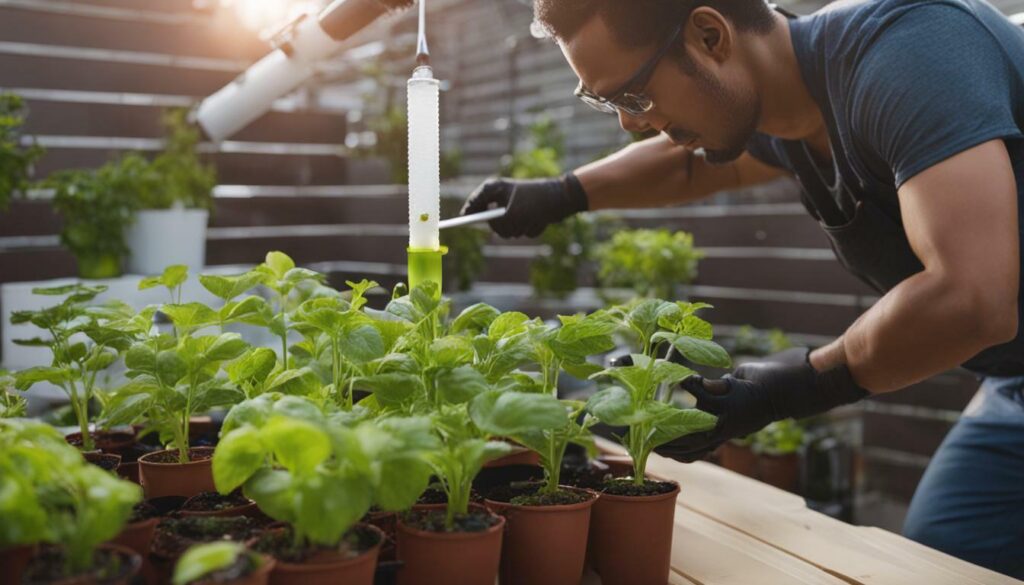 These DIY vertical hydroponic set-ups provide an opportunity for individuals to create their own unique gardens, allowing them to enjoy the benefits of vertical hydroponics in a cost-effective and customizable way.
These DIY vertical hydroponic set-ups provide an opportunity for individuals to create their own unique gardens, allowing them to enjoy the benefits of vertical hydroponics in a cost-effective and customizable way.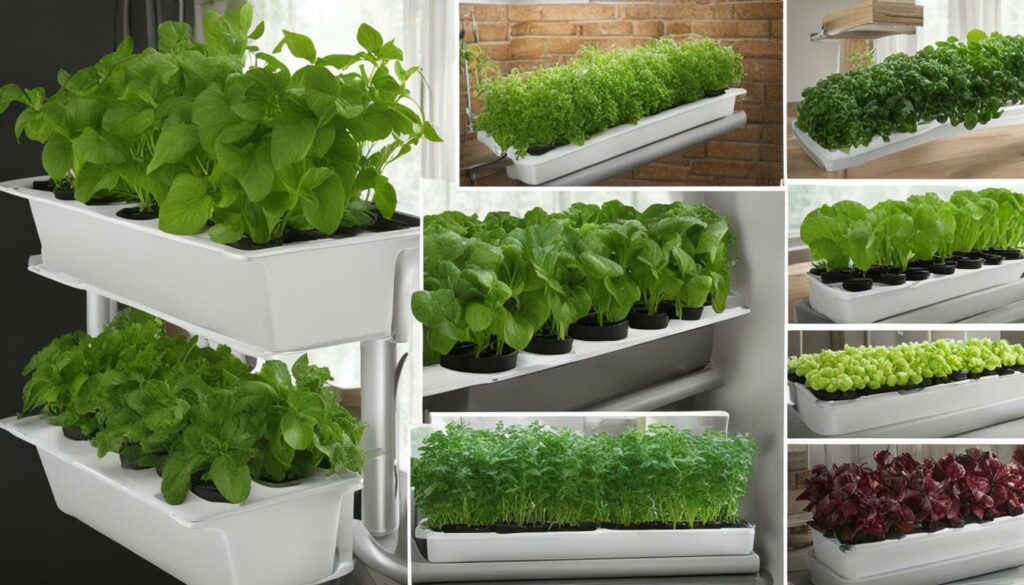
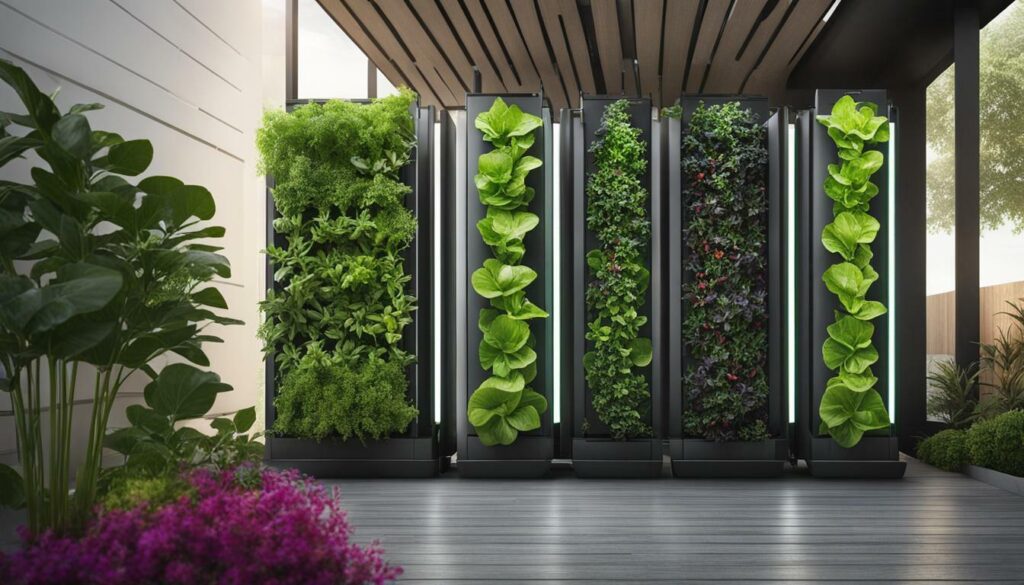
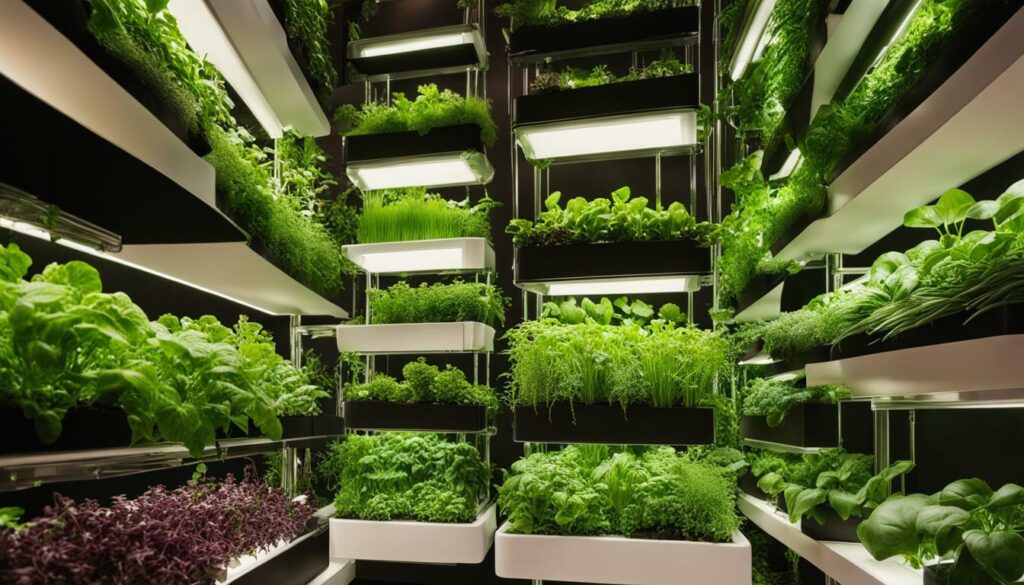 In conclusion, DIY vertical hydroponic set-ups offer a creative and efficient way to maximize your garden space. Whether you choose a stacked system, A-frame structure, zig-zag design, rain tower, or vertical gutter garden, you can enjoy the benefits of controlled nutrient delivery, higher yields, water conservation, and disease prevention. With the right materials and instructions, you can easily build and maintain your own DIY vertical hydroponic garden.
In conclusion, DIY vertical hydroponic set-ups offer a creative and efficient way to maximize your garden space. Whether you choose a stacked system, A-frame structure, zig-zag design, rain tower, or vertical gutter garden, you can enjoy the benefits of controlled nutrient delivery, higher yields, water conservation, and disease prevention. With the right materials and instructions, you can easily build and maintain your own DIY vertical hydroponic garden.
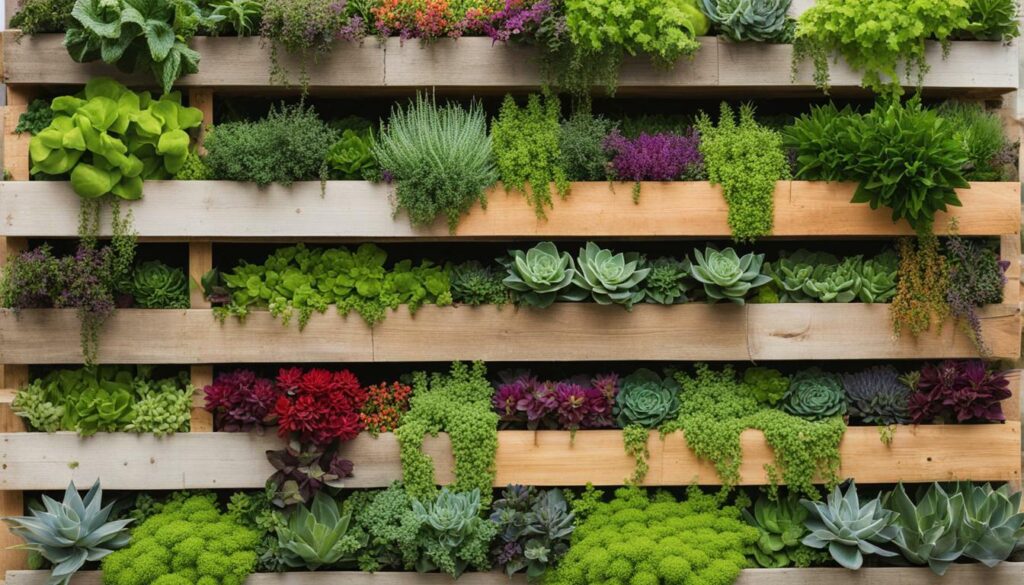
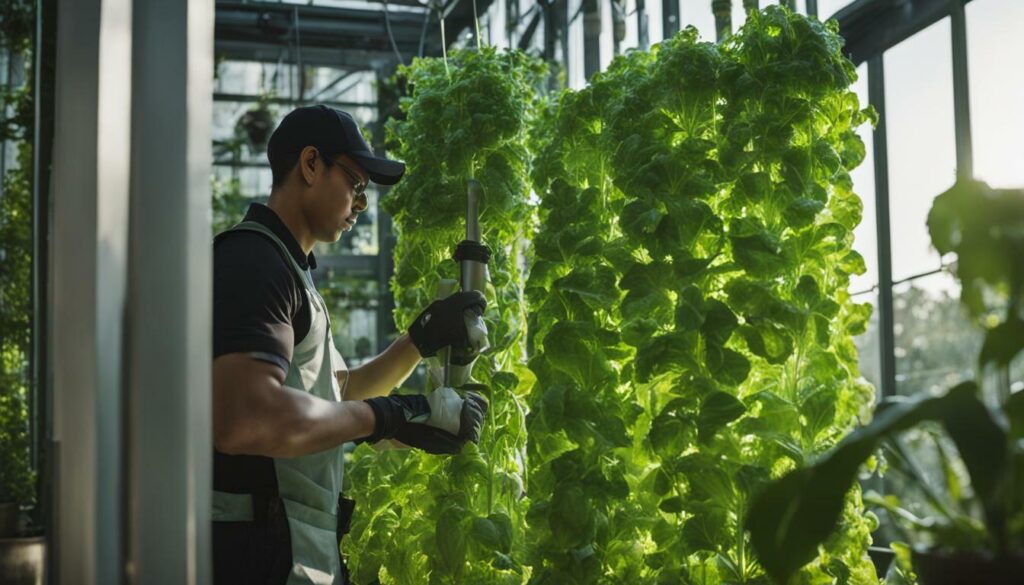 Sources:
Sources:
